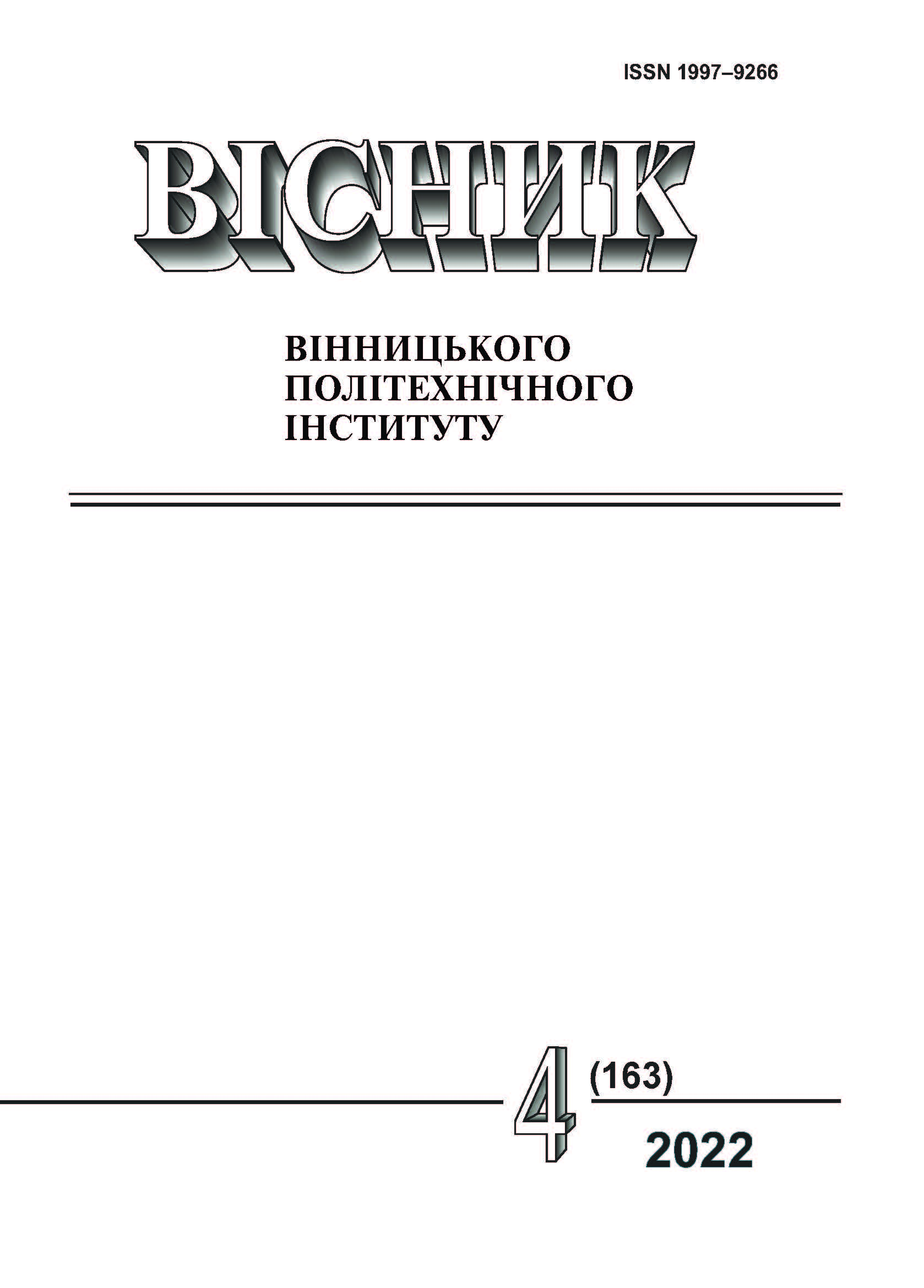Methodology of the Design Automatic System of Structural Monitoring of the Technical Health of Buildings and Structures
DOI:
https://doi.org/10.31649/1997-9266-2022-163-4-64-71Keywords:
automatic monitoring system, sensor network, wireless sensor, damage identificationAbstract
The development of smart systems in various architectural structures leads to the fact that if earlier information about the structural condition was not always important, now when talking about the safety of the population, it is a very high-priority information and direction of research. In general, systems for monitoring the condition of structures allow identification, localization and assessment of damage. Such information about the object allows making appropriate decisions in advance to eliminate possible emergency situations. To solve the task of developing a methodology for the design of an automatic structural monitoring system for various architectural structures, a list of stages that allow designing the necessary system was proposed. So, the research is generally divided into three main stages. At the first stage, topologies of sensor networks are considered. Questions regarding the choice of topology for a wireless sensor network are discussed, and the main advantages and disadvantages of each topology are presented. This will allow to choose the right topology for the system. At the second stage, the levels of damage identification that must be performed, which approaches are based on the used algorithms for damage detection are considered. The most popular algorithms used for damage identification are also listed, their disadvantages and advantages were displayed. The third stage is devoted to the selection of the element base of the sensor node, the comparative characteristics of digital and analog accelerometers are highlighted. Also in this section, popular digital accelerometers are presented and an analysis of the characteristics of how and what is affected by each of them is performed. It was described what characteristics should be taken into account when choosing a microcontroller. When designing, it is necessary to take into account the location of sensor nodes and how this affects the distance of data transmission.
References
A. Araujo et al., “Wireless Measurement System for Structural Health Monitoring With High Time-Synchronization Accuracy,” IEEE Transactions on Instrumentation and Measurement, vol. 63, no. 3, pp. 801-810, 2012. https://doi.org/10.1109/tim.2011.2170889 .
E. Sazonov, Li. Haodong, D. Curry, and P. Pillay, “Self-Powered Sensors for Monitoring of Highway Bridges,” IEEE Sensors Journal, vol. 9, no. 11, pp. 1422-1429, 2009. https://doi.org/10.1109/jsen.2009.2019333 .
J. A. Rice et al., “Flexible smart sensor framework for autonomous structural health monitoring,” Smart Structures and Systems, vol. 6, no. 5_6, pp. 423-438, 2010. https://doi.org/10.12989/sss.2010.6.5_6.423 .
H. Fu, Z. Sharif Khodaei, and M. H. F. Aliabadi, “An Event-Triggered Energy-Efficient Wireless Structural Health Monitoring System for Impact Detection in Composite Airframes,” IEEE Internet of Things Journal, vol. 6, no. 1, pp. 1183-1192, 2019. https://doi.org/10.1109/jiot.2018.2867722 .
J. Pacheco, G. Oliveira, F. Magalhaes, C. Moutinho, and L. Cunha, “Evaluation of low cost vibration based damage detection systems,” Journal of Physics: Conference Series, vol. 1037, no. 052005, pp. 1-8, 2018.
https://doi.org/10.1088/1742-6596/1037/5/052005 .
S. W. Doebling, Damage Identification and Health Monitoring of Structural and Mechanical Systems from Changes in Their Vibration Characteristics. Los Alamos, United States: Los Alamos National Laboratory, 1996, 127 p.
G. D. Zhou, and T. H. Yi, “Recent Developments on Wireless Sensor Networks Technology for Bridge Health Monitoring,” Mathematical Problems in Engineering, pp. 1-33, 2013. https://doi.org/10.1155/2013/947867 .
B. F. Spencer, T. Nagayama, and J. A. Rice, “Decentralized structural health monitoring using smart sensors,” SPIE Proceedings, vol. 6932, pp. 1-14, 2008. https://doi.org/10.1117/12.791077 .
H. Sohn et al., A Review of Structural Health Review of Structural Health Monitoring Literature 1996–2001. Los Alamos, United States: Los Alamos National Laboratory, 2002, 301 p.
P. Cao, S. Qi, and J. Tang, “Structural damage identification using piezoelectric impedance measurement with sparse inverse analysis,” Smart Materials and Structures, vol. 27, no. 3, pp. 1-33, 2018. https://doi.org/10.1088/1361-665x/aaacba .
A. Rytter, Vibrational Based Inspection of Civil Engineering Structures. Aalborg, Denmark: Aalborg university, 1993, 193 p.
P. Rizzo, M. Cammarata, D. Dutta, and H. Sohn, “An unsupervised learning algorithm for fatigue crack detection in waveguides,” Smart Materials and Structures, vol. 18, no. 2, pp. 1-11, 2009. https://doi.org/10.1088/0964-1726/18/2/025016 .
M. L. McHugh, “The Chi-square test of independence,” Biochemia Medica, vol. 23, no. 2, pp. 143-149, 2013. https://doi.org/10.11613/bm.2013.018 .
B. E. Rapp, Microfluidics: Modeling, Mechanics and Mathematics. Boston, United States: Elsevier, 2016, 766 p.
R. G. Brereton, “The Mahalanobis distance and its relationship to principal component scores,” Journal of Chemometrics, vol. 29, no. 3, pp. 143-145, 2015. https://doi.org/10.1002/cem.2692 .
Y. Li, and H. Wu, “A Clustering Method Based on K-Means Algorithm,” Physics Procedia, vol. 25, pp. 1104-1109, 2012. https://doi.org/10.1016/j.phpro.2012.03.206 .
N. A. Alqahtani, and Z. I. Kalantan, “Gaussian Mixture Models Based on Principal Components and Applications,” Mathematical Problems in Engineering, pp. 1-13, 2020. https://doi.org/10.1155/2020/1202307 .
Downloads
-
PDF (Українська)
Downloads: 157
Published
How to Cite
Issue
Section
License

This work is licensed under a Creative Commons Attribution 4.0 International License.
Authors who publish with this journal agree to the following terms:
- Authors retain copyright and grant the journal right of first publication.
- Authors are able to enter into separate, additional contractual arrangements for the non-exclusive distribution of the journal's published version of the work (e.g., post it to an institutional repository or publish it in a book), with an acknowledgment of its initial publication in this journal.
- Authors are permitted and encouraged to post their work online (e.g., in institutional repositories or on their website) prior to and during the submission process, as it can lead to productive exchanges, as well as earlier and greater citation of published work (See The Effect of Open Access).





